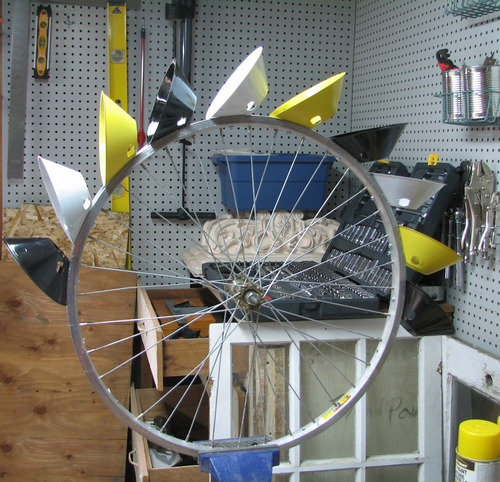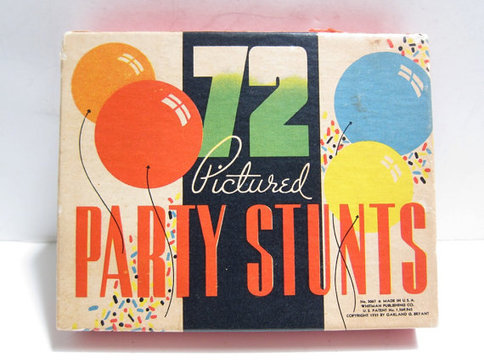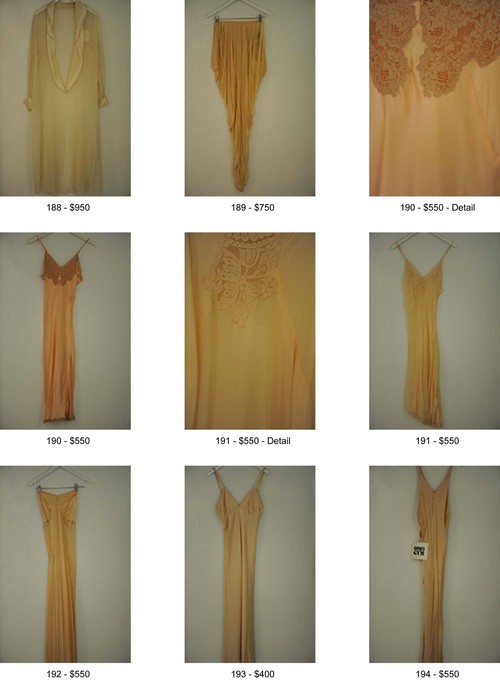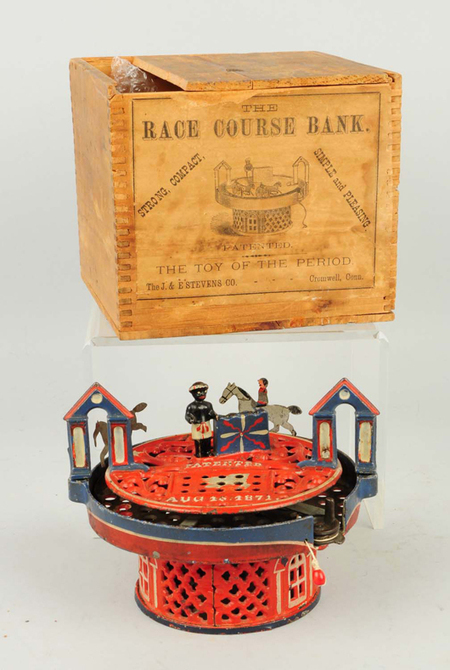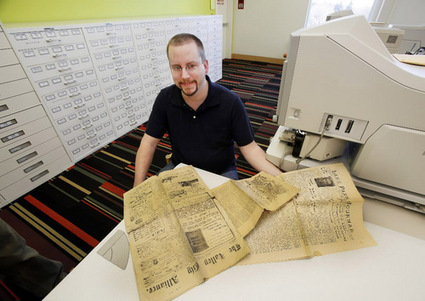In this week’s Dakota Death Trip update, I posted a photo of a girl who looks much too sad to be wearing satin. When I flipped the photo over, the back has a big rubber stamp mark from the photo studio that produced the image:

A penny a pound? A pound of what?!?
I got excited when I found a Flickr photo from a guy who reports the same Charlotte, N.C., studio as the source of his photo — hey, somebody else sat on the same spot as the girl in my photo! Unfortunately, after a little research, I found that it wasn’t such a coincidence.
Dating a photo takes a whole lot of research: what year is that car? When was that toy under the Christmas Tree first made? What movie is on that marquee in the back? When was that brand name used? There’s a whole bunch of history bundled up in every photo, even if it is just a brand of shoes or a style of eyeglasses. So, this stamp on the back of a photo is enough for me to narrow down the origin of the photo to a timespan of a couple years.
Department stores used to be far more than the acres of products they are today. Your mom could take you down to Woolworth’s, buy you lunch, get your hems lowered (you’ve grown, you know) by the in-house tailor, take you for a haircut, and get your photo taken, all without leaving the building. This hasn’t entirely gone away: the J.C. Penney out at the mall — an expatriate from Downtown during the seventies — lost its restaurant in the early eighties, but it has brought along its hair salon and photo studio into the 21st Century.

Stanley Hoke and Needham Holden were the proprietors of Dunbar-Stanley Studios, and in the 1940s or early 1950s, according to an interview in the Victoria (TX) Advocate in 1960, the two men were driving between appointments and saw a sign that offered watermelon at the amazing deal of 1/2-cent…until they read the small type below the price: “per pound”. Holden thought that marketing ploy would work in their line of business, and began advertising baby photos priced like chuck roast: they’ll photograph your kid, at the cost of one penny per pound of the child’s weight.
Dunbar-Stanley Studios had the advantage of being the exclusive photography studio of the J.C. Penney department store franchise. Although some stores may have been large enough to support a full-time photo studio, the smaller stores made appointments with Dunbar-Stanley to send out a photographer for a few days at a time, several times a year.

Their photography studio business first was just called “Penny-a-Pound Portraits”, as the stamp on the Flickr-user’s photo showed, but changed its name to Pixy Pin-Ups sometime around 1953. In the 1960 article, however, they say the business outgrew the penny-a-pound model and, rather than increasing their per-pound rate, just charged a cheap flat rate.
Charging per pound of chubby baby didn’t die out, though: Pixy Pin-Ups — later shortened to just “Pixy” — used the penny-a-pound gimmick until the late 1970s.

Hoke and Holden didn’t just come up with a funny pricing model: their entire business was tightly controlled to make baby photogaphy as effective as possible. The 1960 article says they only employ “…young and unmarried women, many of whom are recruited from airline hostess schools”, and their training went beyond just clicking a shutter. Training included child psychology, and by the end of their training, whether literally or figuratively, the employees are “required to dismantle and reassemble the camera with her eyes closed.” A 1966 “Help Wanted: Female” listing from Eugene, Oregon, listed requirements as “Single and over 18; High school graduate; Have good character references.” The ad outlines the benefits as well: salary during training, a company car with all expenses paid, and after 3 years a free trip to Europe to employees with ‘satisfactory service’. This army of young ladies, high-tech camera in hand, cruised the backroads of America from J.C. Penney to J.C. Penney, trying to get kids to smile.

The penny-a-pound was their loss-leader: for that price, mom got one 5×7 portrait. The rest came as part of a higher-priced package, which is probably why I only have a 5×7 in this pile of photos. Fifty cents in the 1950s would be almost $5 today, a reasonable price for a photo sitting, but the young ladies pulled away from service with the airlines were also trained to upsell to the higher-priced sets, in hopes of getting a $10 sale out of each kid’s parents. J.C. Penney actually made the sale, sharing a portion of the profit with Dunbar-Stanley Studios, and all the film was shipped off to North Carolina for processing. That’s why there’s people out there confused that their baby photo is stamped with a studio a thousand miles away from where they were raised. The ‘Pixy’ name remained well into the 1990s, but the current J.C. Penney portrait studios aren’t run by Dunbar-Stanley anymore: the current business is based out of Eden Prairie, MN, and goes by the name “JCPenney Portraits” — although at least one still goes by the Pixy name.
So, after a morning of scouring old newspapers, I can date my photo of the unhappy satin girl to somewhere around 1953 to 1958. Based on where I got these photos, mine was probably taken either in the old J.C. Penney’s in downtown Fargo, or the Wahpeton store, one of the oldest locations.
). We have the case too, but it looks much nicer in the cabinet!









































